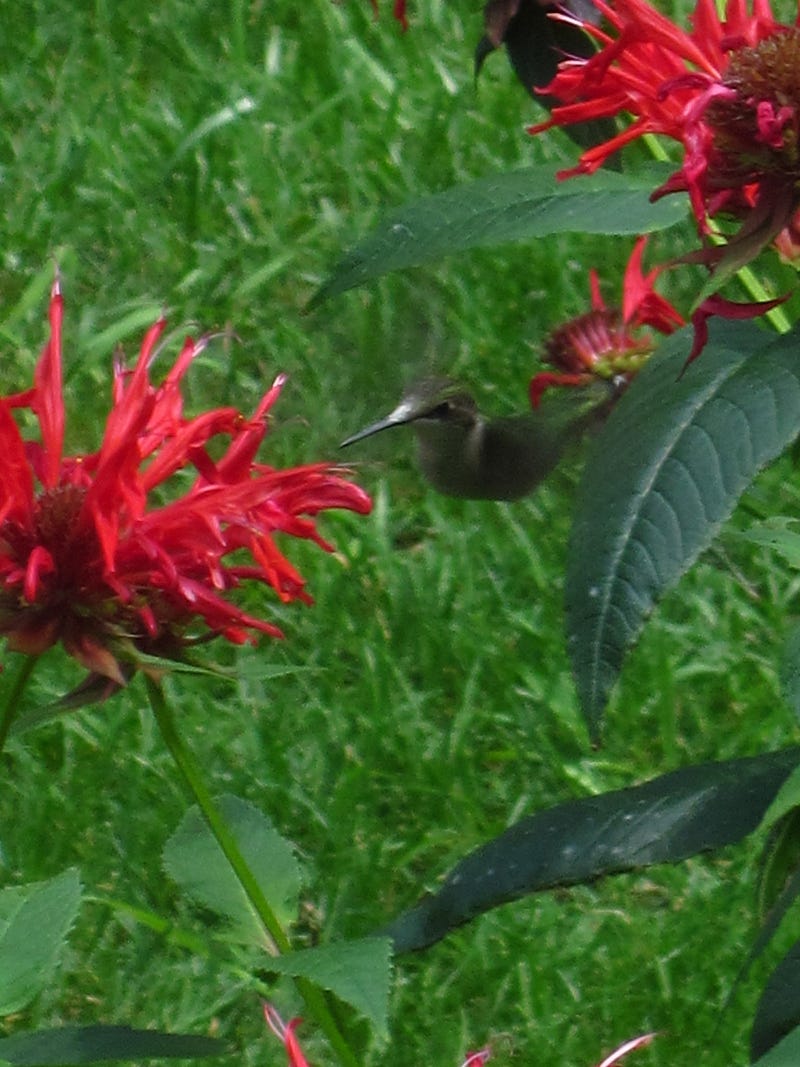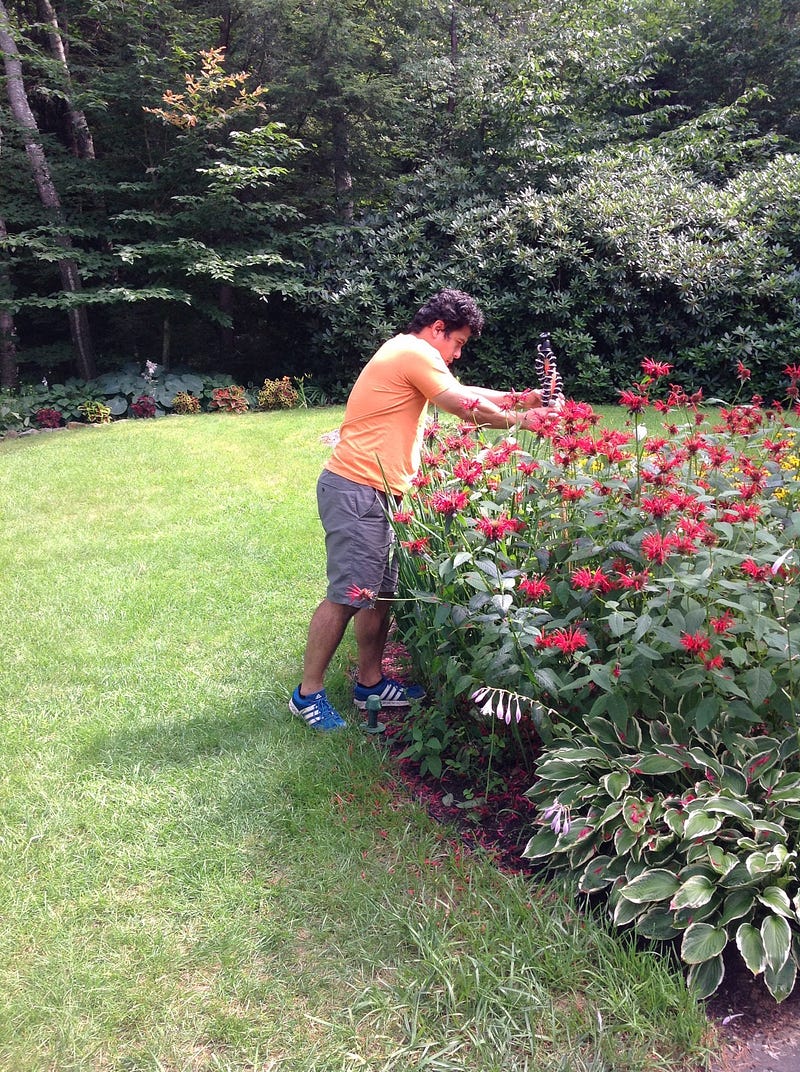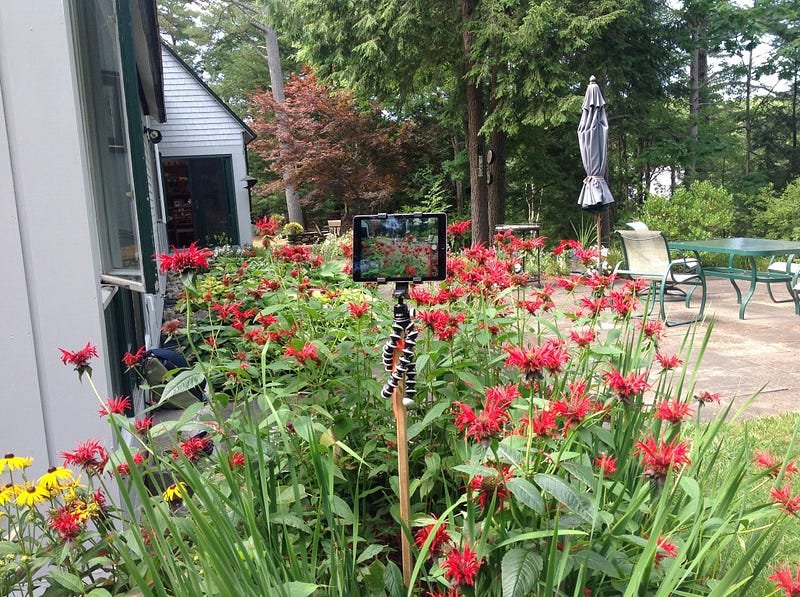
Last time, I explained several reasons why feeding wildlife can be a poor choice, both for people and for the animals. Beyond the nuisance behaviors I mentioned, it is important to consider that the animals do not need you to provide them with food. They are well-equipped to hunt or forage their own. That said, the main problem presented by feeding animals is by giving food directly to them. However, this is not necessary if you provide natural sustenance with your own gardening choices.
The above plant is called a scarlet beebalm, Monarda didyma, and is a common ornamental plant in the eastern United States. This is because of its own natural beauty, but also because of some of the interesting visitors it can attract.

Hummingbirds. There aren’t many species of hummingbirds found in New Hampshire (these photos were taken in my parents’ garden), which means this is most likely a female ruby-throated hummingbird, Archilochus colubris. The nectar in flowers is high in sugar, which is necessary to maintain the high metabolism of these tiny birds. This metabolism allows for the fast wing beats, about 50 per second, that hummingbirds are known for and produce their distinctive humming sound. Because of the rapid wing movement, hummingbirds are incredibly maneuverable and can even hover or fly backwards. Both their flight mechanism and their metabolism set hummingbirds apart from most other animals. Both of those are much closer to what one would see in some insects, rather than most birds.
However, sometimes it’s the little things that catch my interest and stick in my memory. When I was first learning about ornithology in school, I considered the taxonomic Order that includes hummingbirds to be the most humorous of all the bird Orders I learned. Hummingbirds, as well as swifts and tree swifts, belong to the Order Apodiformes. If you’re familiar with Greek roots, you know that ‘a’ means without and ‘pod’ means foot. Yes, the name literally means ‘without feet’, because the feet of these birds are so small.

There’s my brother, Nelson, fiddling with something in the Monarda, but what is he up to? If you recall my Galápagos retrospective, the pictures I included were all his, not mine. He’s got quite a talent for photography and he’s also the tech whiz of our family. As you might imagine, getting a good picture of a hummingbird is a difficult task. What Nelson is doing in that picture is setting up a camera to take slow motion video.

Now all that’s left is to sit back and wait for a hummingbird to return to the Monarda. Since hummingbirds seem most attracted to tubular flowers of red, orange, or bright pink color, it shouldn’t take too long for the individual in the photo above to return for more.
So, what was the point of all of this? Mainly, I really wanted to show you all the neat hummingbird video my brother shot. However, I think this is also a good illustration of how to go about attracting wildlife. Directly giving food to animals is not a good idea, as I demonstrated last time. However, providing an environment in which they can feed naturally (like including native plants for pollinators) is perfectly acceptable. “What about bird feeders?” you might ask. Bird feeders are okay. The birds don’t really need your help to get food, but I can understand the desire to be able to view them more often. They’re certainly much better for you and the wildlife than direct hand-feeding.
For next time…wait, this story is getting posted on Halloween isn’t it? I totally should have written a spooky wildlife story. Oh well, maybe for next time, as a belated holiday tribute.